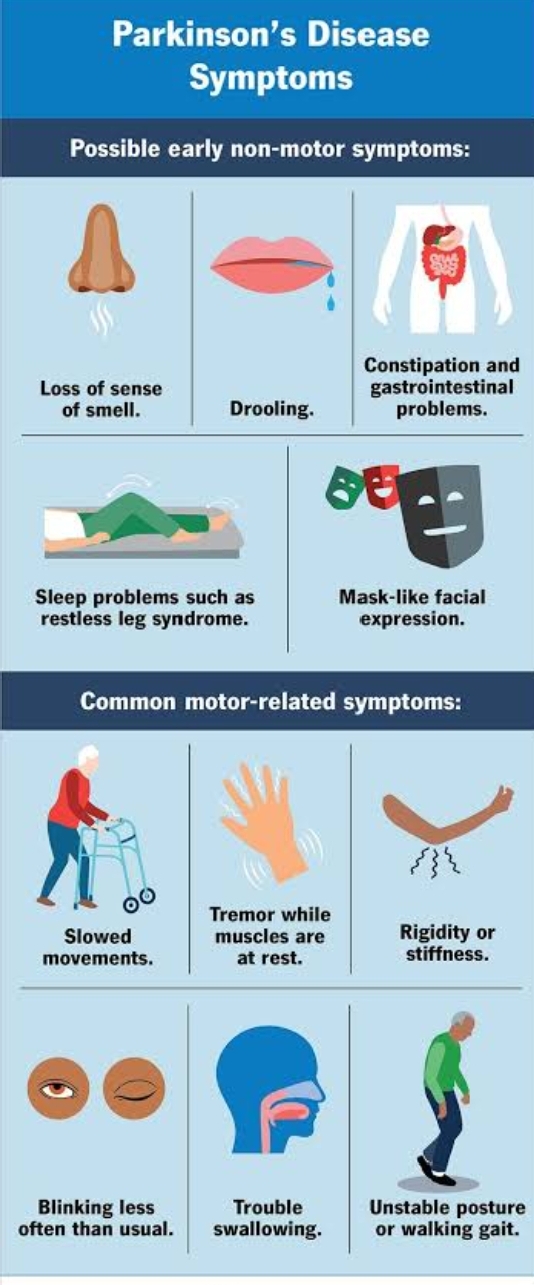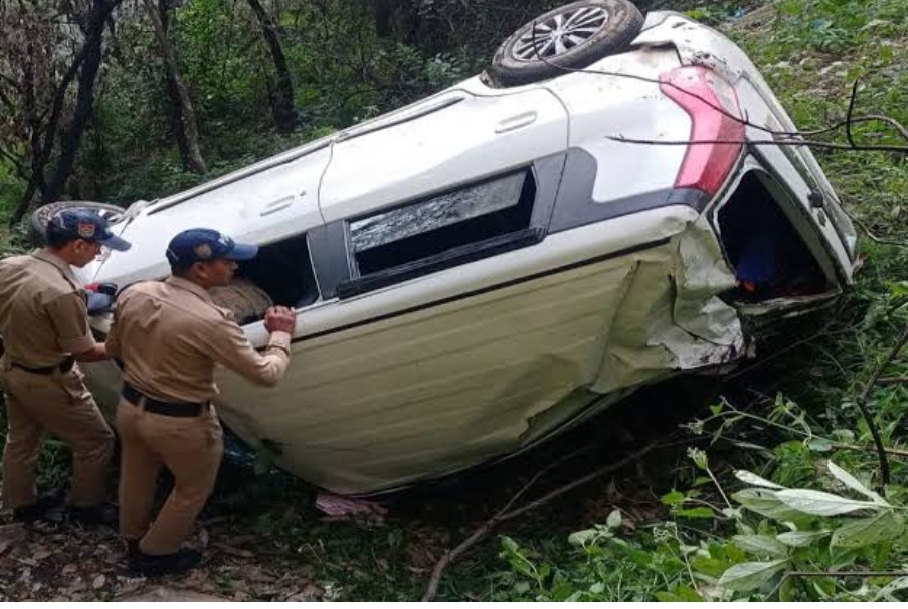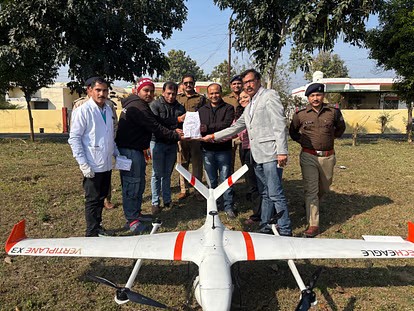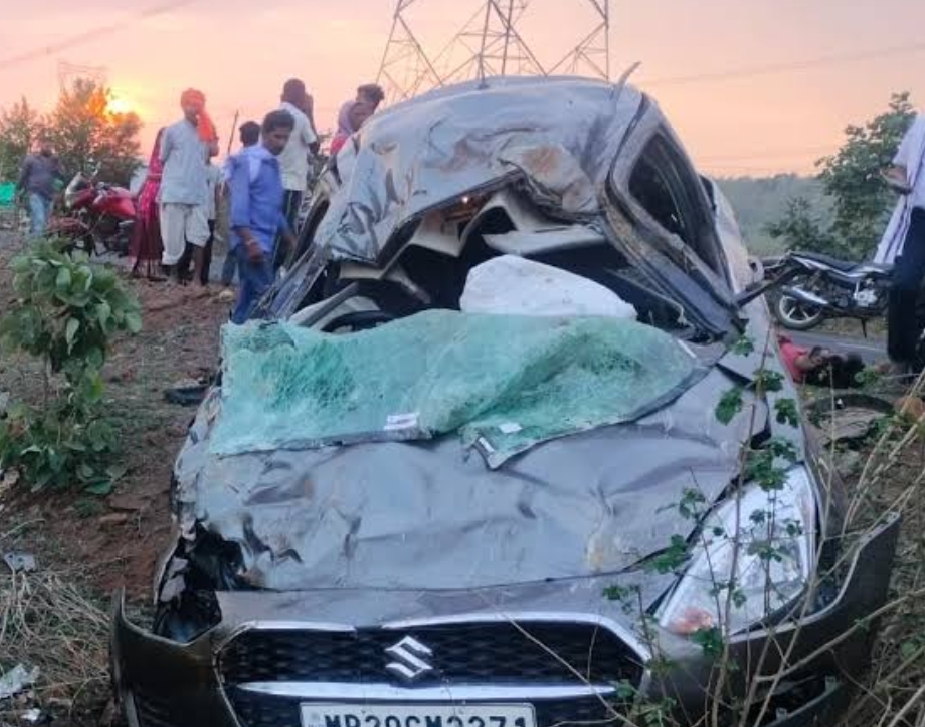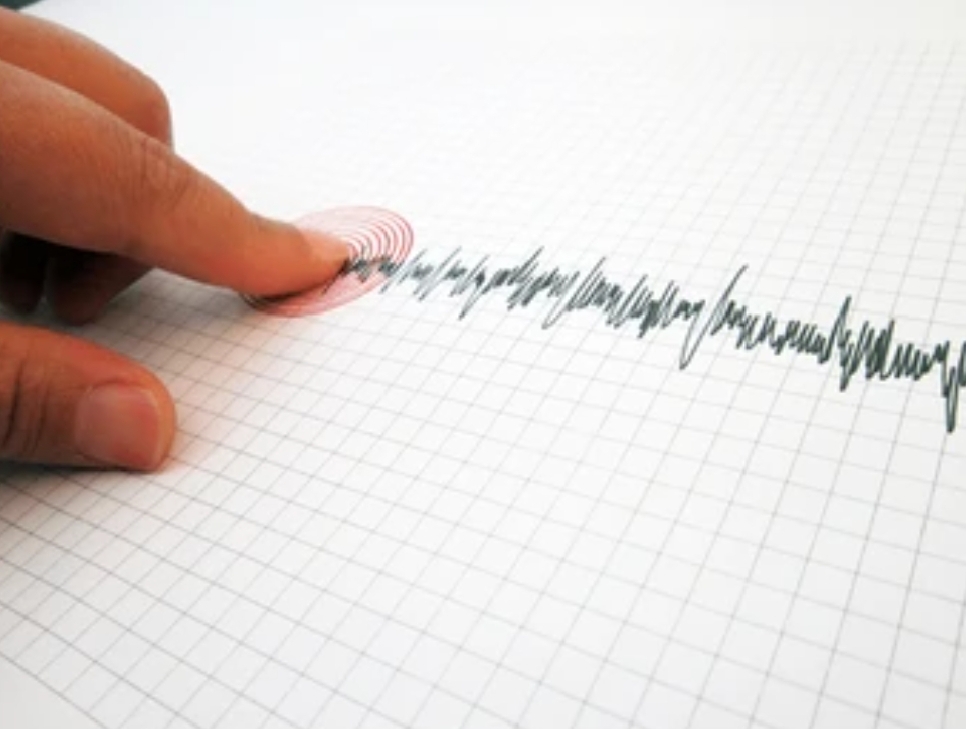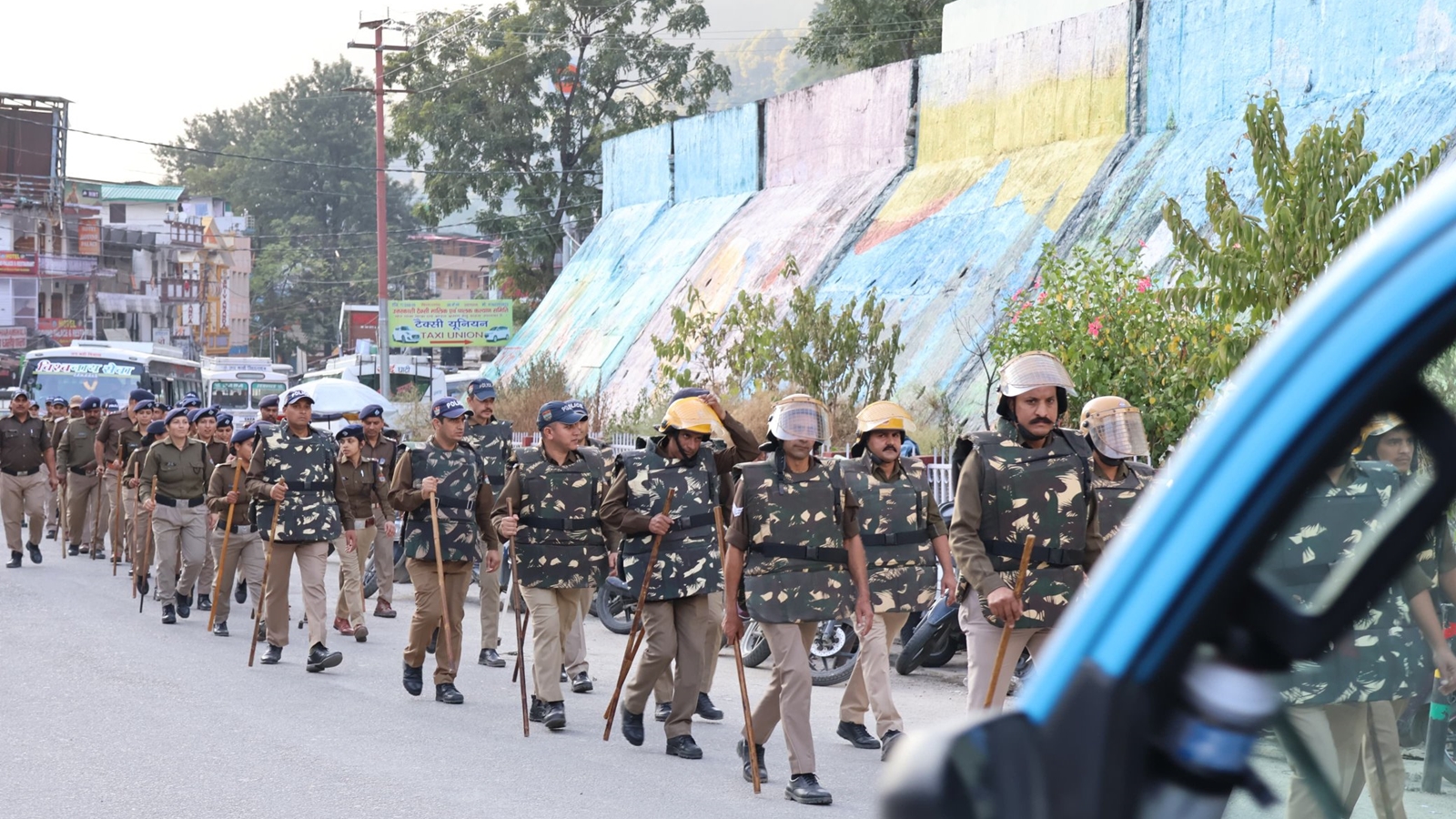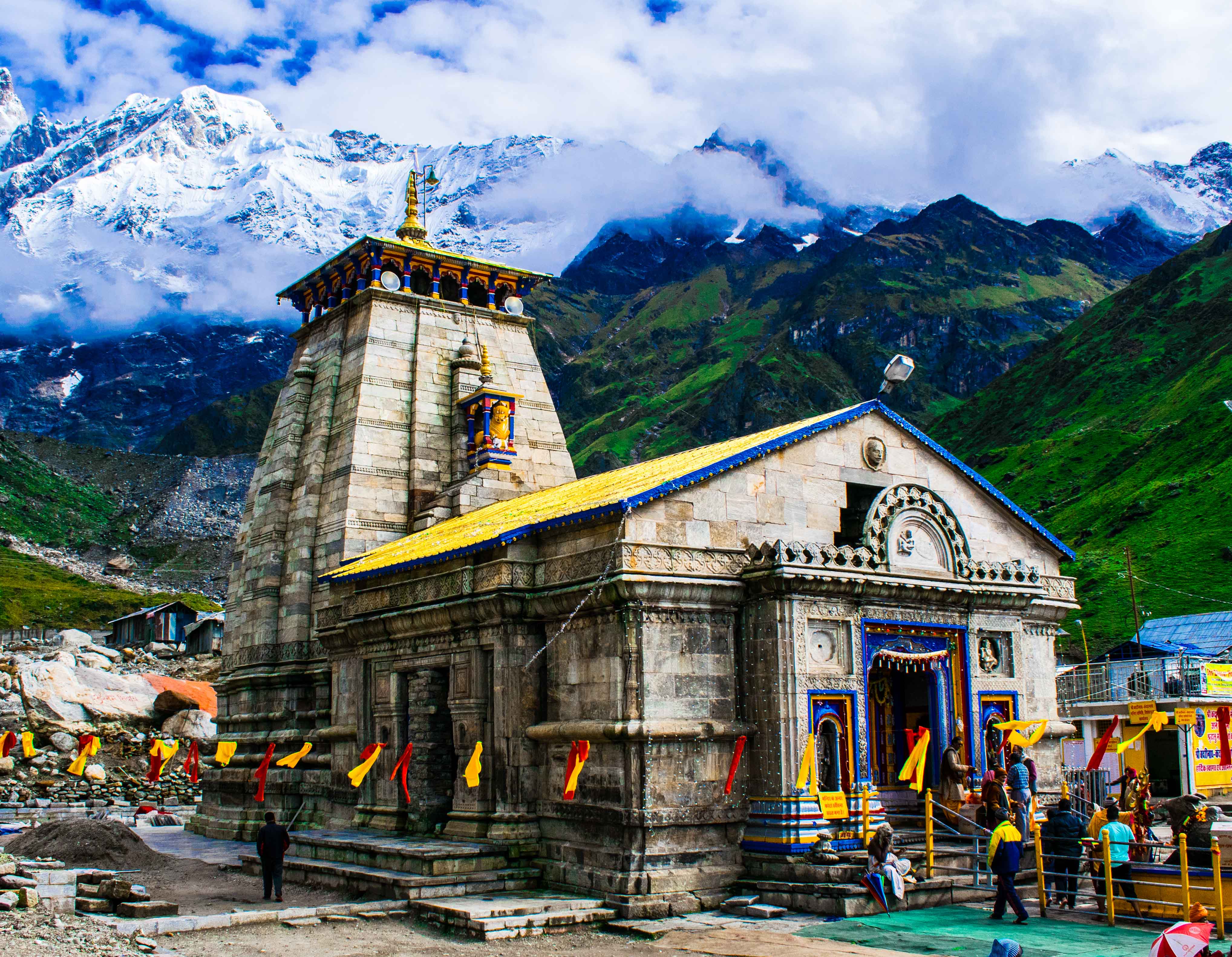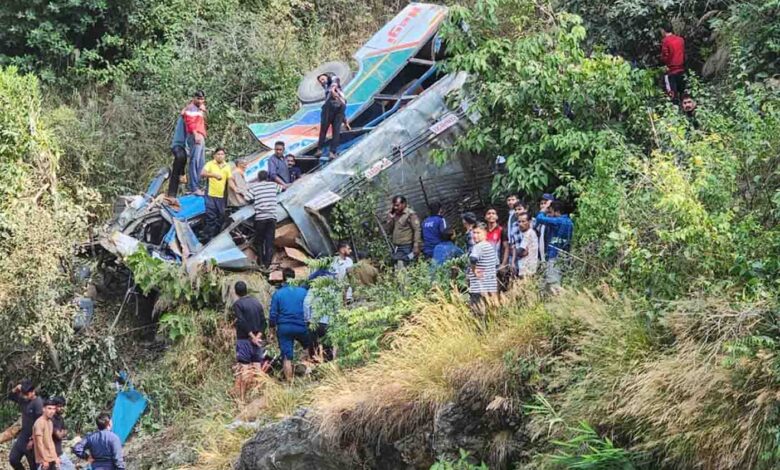Uttarakhand Tragedy: 5 Dead as Wedding Car Falls Into Gorge in Chamoli – Celebration Turns Into Mourning
A heart-wrenching tragedy unfolded in Uttarakhand’s Chamoli district on Friday evening when a car carrying people returning from a wedding plunged into a deep gorge, killing five people on the spot. The incident occurred around 7 PM near Koreldhar on the Birhi-Nijmola motor road, sending shockwaves through the local community and leaving families devastated.
Returning from a Wedding Turns Fatal
According to initial reports, the victims were returning from a wedding in Nijmola village and were headed to their native village of Harmani in the Dasholi block. While driving through the hilly terrain amidst light rain and poor visibility, the car lost control near a dangerous curve and fell into a gorge over 200 meters deep. The impact was so severe that all five occupants died on the spot.
Search Began After One Car Went Missing
The tragedy came to light when one of the wedding cars failed to arrive at the destination. Family members and relatives began searching the route when the vehicle did not show up for several hours. As they scanned the hilly road near Koreldhar, they discovered the wreckage of the car deep in the valley. Panic ensued, and the local authorities were immediately informed.
Rescue Teams Face Difficult Terrain
Soon after receiving the alert, teams from the police, State Disaster Response Force (SDRF), and the district administration reached the spot. However, due to heavy rainfall and darkness, the rescue operation was extremely challenging. Despite the adverse conditions, all five bodies were recovered after hours of strenuous effort. The bodies were sent for post-mortem to the district hospital.
Grief Strikes the Village
As the news reached Harmani village, where the victims belonged, an atmosphere of mourning replaced the earlier celebrations. The families that were once rejoicing the union of two souls were now grieving the loss of their loved ones. Wails and sobs echoed through the village streets, as neighbors and relatives gathered in disbelief and sorrow.
Chief Minister Expresses Condolence
Uttarakhand Chief Minister Pushkar Singh Dhami expressed deep grief over the tragic incident. In a statement, he offered condolences to the bereaved families and assured that the state government would provide all possible assistance. He directed the local administration to expedite the compensation process and ensure that the victims’ families are not left alone in this hour of crisis.
A Stark Reminder of Road Safety in Hills
This accident once again raises questions about road safety in the hilly regions of Uttarakhand. Narrow roads, lack of protective barriers, and unpredictable weather often make driving in these areas extremely risky. Experts have long warned about the dangerous conditions of mountain roads and the need for infrastructural upgrades.
Locals pointed out that the Birhi-Nijmola route, in particular, is known for its sharp turns and lack of guardrails. They have demanded that the road be widened and proper safety measures be implemented, especially in accident-prone stretches. According to them, this isn’t the first time such a tragedy has occurred on this route.
Avoid Travel During Bad Weather, Urge Authorities
In light of the accident, local authorities have appealed to residents and travelers to avoid unnecessary travel during inclement weather. The district administration has also reminded people to follow safety norms strictly and ensure that vehicles are properly maintained before undertaking hill travel. The Meteorological Department has issued a rain alert for the next three days, making travel even more hazardous in such areas.
Joy Turns Into Grief – A Tragedy No One Expected
What was supposed to be a joyous return from a wedding turned into a devastating chapter in the lives of five families. The suddenness of the loss, the helplessness of the victims, and the irreparable emotional damage have left an entire community shaken. The heartbreaking part is not just the accident itself, but the fact that these were lives full of hope, returning with smiles, unaware of the fate awaiting them around the bend.
A Call for Immediate Action
The incident should serve as a wake-up call for state authorities to take immediate steps toward improving road infrastructure in mountainous regions. Emergency services, warning systems, and weather-sensitive travel advisories must be enhanced to prevent further loss of lives. While nature and terrain cannot be changed, human negligence and administrative apathy can be corrected.


